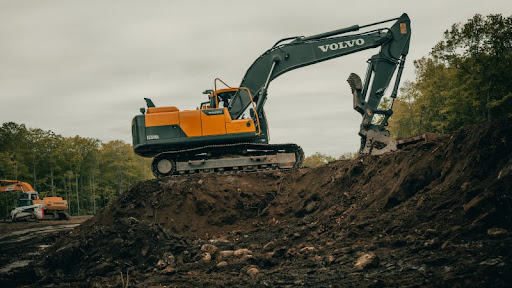In construction, assembly and disassembly is a part of standard operations. From preparing site foundations for the tallest of apartment complexes to precision civil construction, such as the maintenance of civil utilities in a high-density urban environment, having an understanding of the different types of construction procedures and operations available can mean the difference between a simple, short term project, and a costly construction mishap.
In this article, we’ll be exploring some of the different types of excavation techniques and technologies that exist. In recent years, there has been an emergence of specialized methods, such as vacuum excavations, which allow workers to conduct construction works in a targeted and safe manner, without having to tear up large areas.
Let’s explore excavation and just a small fraction of the possibilities that make up this growing sector.
Table of Contents
What is Excavation?
Excavation is a relatively general term – simply put, it’s the process of removing soil and other substances to create a hole (sometimes known as a cavity) in a surface.
An example of this at a small scale may be digging a hole to unearth utility connections in a city block. A much larger example could be the process of excavating large swathes of soft topsoil around a building site, in order to develop a firm foundation for a building.
There are many different types of excavation methods – each having its own unique place and purpose in the realm of construction. Largely, they can be broken down into two characteristics – the type of material that is excavated, as well as the reason that it is conducted.
Why is Excavation Important?
Excavation is critical when developing the foundations of any construction project. It’s important in construction that buildings are developed on a well-supported foundation – particularly in environments where surface conditions can be unsteady, or potentially treacherous.
There are many examples of how a poor foundation can lead to leaning structures and undesirable outcomes – even though it’s a major tourist attraction one of the most famous examples of a failure in excavation and construction methods is the Leaning Tower of Pisa.
In modern construction, having a clear understanding of the excavation methods that are available for a given project is a great way to mitigate some of the risks that may occur when simply excavating with the first available method.
In modern construction, it makes no sense to simply dig a large hole in the ground, if there are safer and more targeted methods for the project on offer.
Excavation Methods and Use Cases
Excavation methods vary, depending on the particular construction need. For example, when developing a train station such as those in the Metro Tunnel, a cut-and-cover method of excavation was used to excavate soil to enable a station to be formed.
When complete, a station box is then sealed and backfilled, allowing for the excavated soil to be reused on the project.
While cut-and-cover may be useful for large-scale excavations, when the use case is much smaller, say the uncovering of a utility line for maintenance and replacement, advanced methods such as safe excavation may be more useful.
In the case of vacuum excavation, a high-powered water hose is used to loosen soil and particulates, creating a slurry. This is then vacuumed up, enabling construction specialists to get a firm understanding of underlying soil conditions without removing large chunks of earth.
Excavating Different Materials
Often, excavation is classified by the type of material that is excavated. Depending on the material excavated, there may be different methods that are suitable for their methods.
The shallowest form of excavation is topsoil excavation. This typically involves removing the topmost layer of soil (hence the name) – as this layer of soil is often much looser than the underlying earth, it may not be suitable for laying foundations and as such, needs to be cleared.
A deeper form of excavation is earth excavation. This involves removing the layer of earth underneath topsoil – which, while soft, may not have formed solid, rocky structures.
This is useful when developing deep foundations, as the material excavated here can be reused for other project elements, such as embankments.
No matter your material, there’s a range of different excavation methods that can be used, depending on your material. While we’ve only touched on some of the methods here, we’d encourage you to explore the possibilities for your next construction project.





